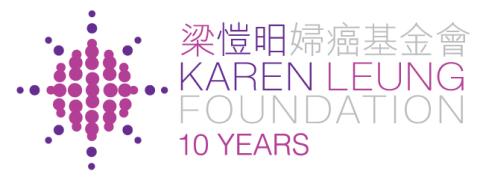關於這計劃
Project SAFE 是由梁愷昍婦癌基金會與相達生物科技合辦,旨在推廣和嘗試透過尿液取樣的創新非入侵性篩查方式進行HPV DNA檢測。
所有參與 Project SAFE並在過去 3 年內未接受篩檢的女性, 將可接受免費的子宮頸抹片檢查,包括HPV DNA 和尿液檢測。
項目詳情
參加者指南
-
1

第一步
請點擊右上角按鈕"我要報名"並完成登記。列印確認書。自登記日起計兩星期內,致電毅力醫護健康集團預約免費檢測。佐敦-34269771、 銅鑼灣-35203292、 荃灣-31014866 、沙田-37047168。 -
2

第二步
你將在毅力醫護健康集團接受免費子宮頸癌篩查。包括 HPV DNA 檢測、子宮頸抹片和尿液檢測。 -
3

第三步
毅力醫護健康集團將與你聯繫以解釋說明你的檢測結果,並確定是否需要進一步跟進。
常見問題
疫苗對未開始有性生活的女童最為有效,但亦無法提供全面保護。因此,建議女性定期接受子宮頸癌篩查。
自2023年4月起,HPV DNA被推薦成為宮頸篩查基層篩查工具。現在亞太地區國家已推出HPV DNA自我檢測,但香港的樣本採集方法仍然保持不變。
項目夥伴

